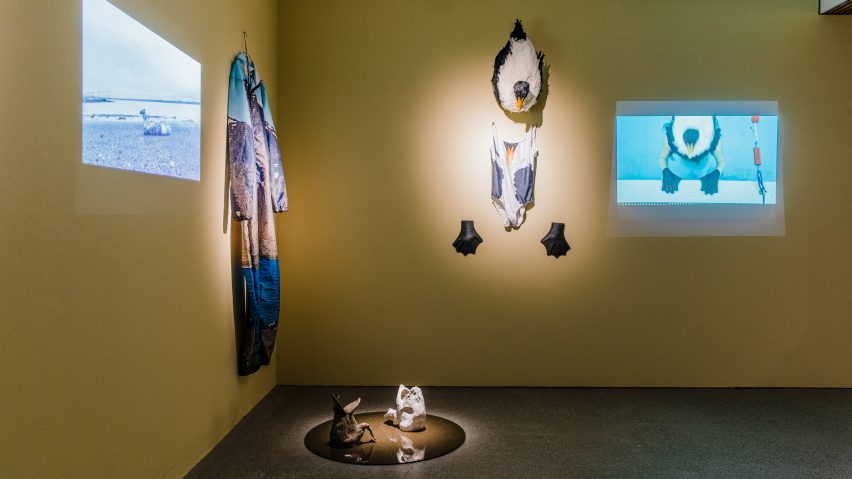
Exhibition explores relationship between Iceland's eider ducks and farmers
Twenty-six designers and artists have interpreted the process of farming eiderdown for the Eider and Farmer exhibition at the Alvar Aalto-designed Nordic House in Reykjavík as part of this year's DesignMarch.
Named Eider and Farmer: A symbiotic relationship, the exhibition aims to draw attention to the interdependence of farmers and sea ducks in Iceland, which produces around 75 per cent of the world's eiderdown.
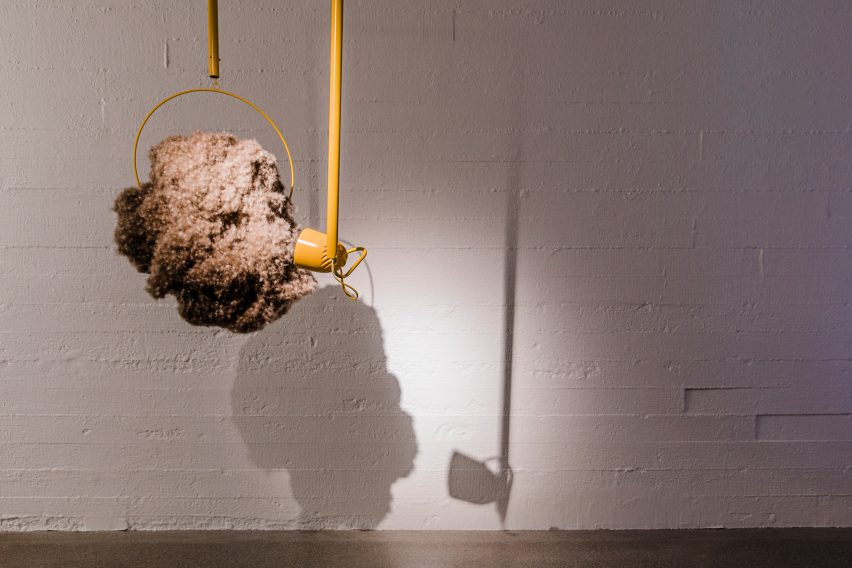
In a traditional Nordic process, farmers collect eider from nests and provide protection for the eider ducks while they are on land.
However, the relationship is under threat due to climate change impacting the ducks' habits and the growing age of the eider farmers.
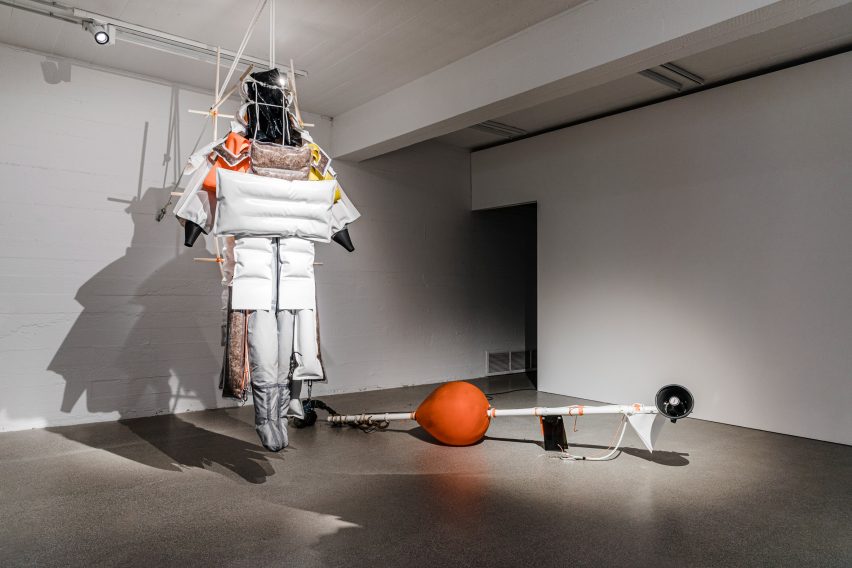
"The eider and eider farming is under threat by climate change as well as by changes in lifestyle, with people moving from the farmlands to the cities," explain curators Hildur Steinpórsdóttir and Rúna Thors.
"Learning from this sustainable, but gradually declining Nordic heritage, the project gives rise to innovation and production of new artworks. Fresh viewpoints emerge, as well as thoughts on how we treat our environment and harvest our planet."
Eiderdown, which is described by the curators as the "most insulating material on earth" naturally falls from the ducks' breasts while nesting to allow their body warmth to reach their eggs.
This material is collected by around 350 eider farmers in Iceland, including the country's president Guðni Thorlacius Jóhannesson, before being cleaned and used to fill coats and duvets.
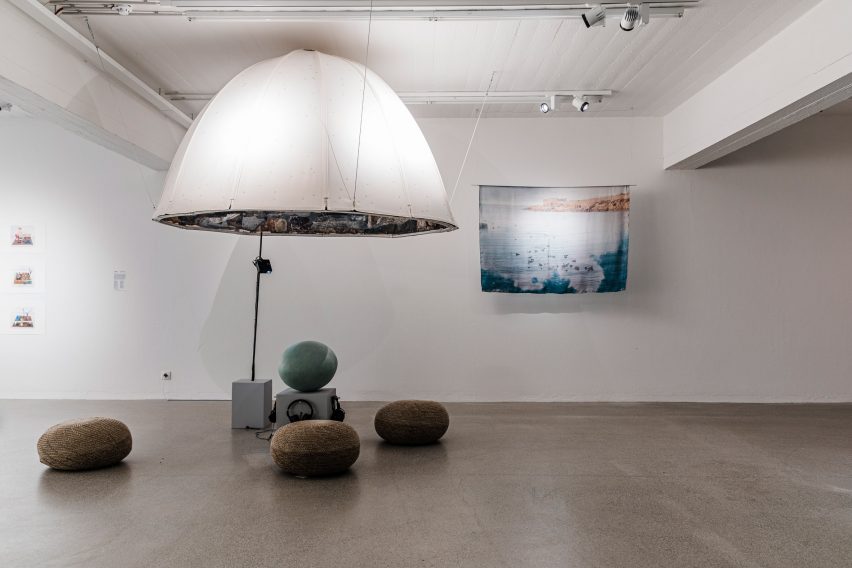
As part of the three-year research project, the artists from Iceland, Denmark and Norway spent time with one of the country's eider farmers to understand the individual ways they cared for the ducks and collected eider.
The artworks each aim to draw attention to the unique and traditional process. At the entrance to the exhibition is an installation created by Are we studio?, which draws attention to the lightness of eiderdown by hanging it alongside a yellow fan.
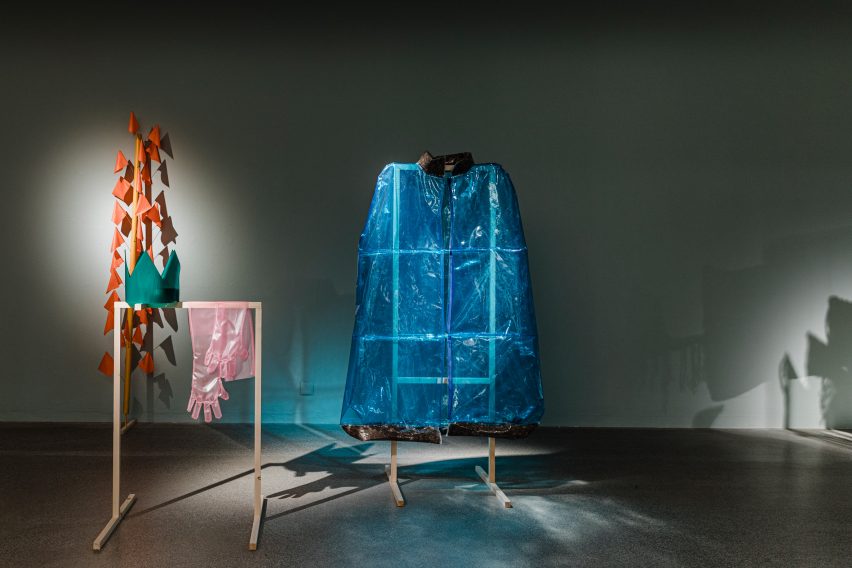
Several artists were inspired by the duck's nest. Anne Lass, Lisbeth Burian and Rikke Houd created a nest-like sound installation called Eider Or – the listening nest, while Gabriel Johann Kvendseth built a nest from his and his family's hair.
Artist Margrét H Blöndal photographed a large number of nesting areas that were made by five- and six-year-olds from the Landakotsskóli school in Reykjavík.
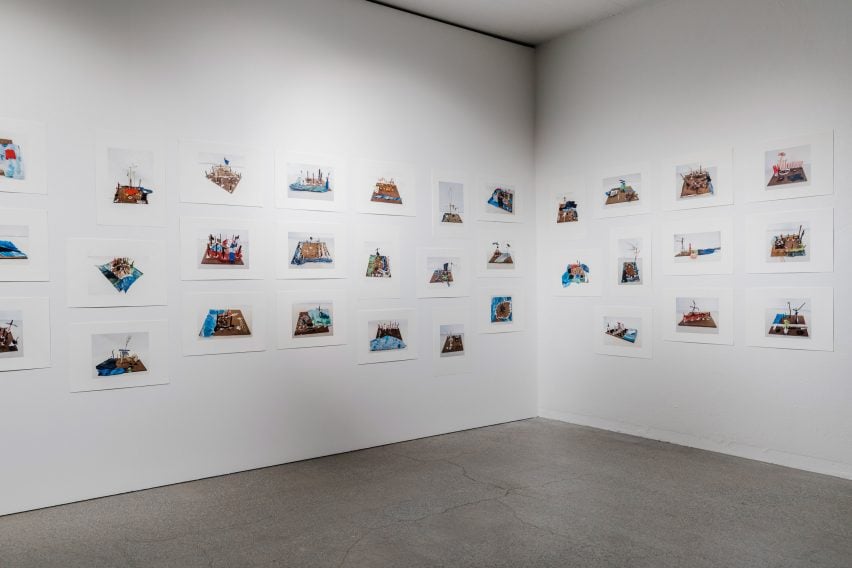
Others created Eider-informed costumes, with Íris Indriðadóttir and Signý Jónsdóttir designing a uniform for farmers to wear while collecting the down; meanwhile, Auður Ösp Guðmundsdóttir and Hanna Jónsdóttir created a par of disguises to be used on land or at sea.
And Anti Matter drew on the fact that eider ducks only spend 25 days a year on land for their project named Infinite Ocean, which is a suit devised to allow humans to spend large periods of time at sea in the face of rising sea levels.
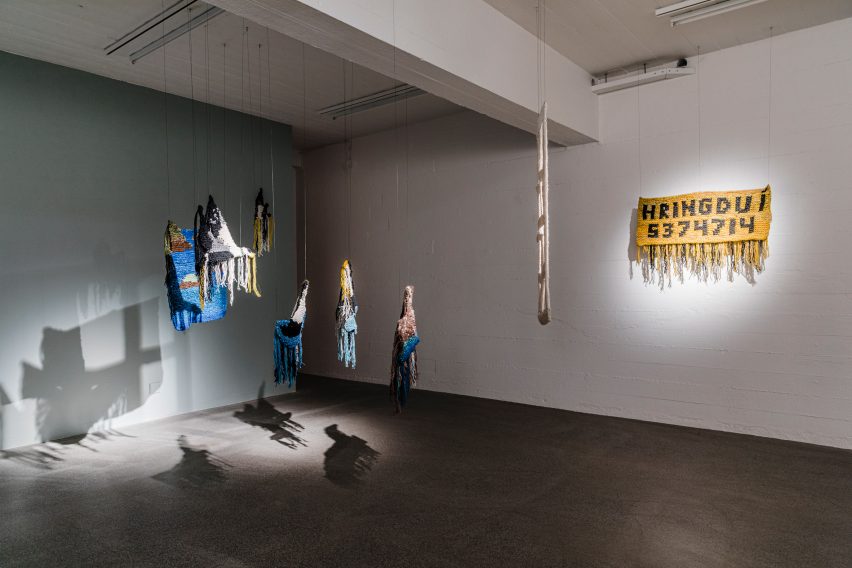
Other artists created pieces in a wide range of mediums. Friðgeir Einarsson and Sigrún Hlín Sigurðardóttir contributed various forms knitted from wool, including a phone number that visitors can call and hear the artists recreating the duck's calls.
Hilda Gunnarsdóttir & Loji Höskuldsson displayed a set of bed linen embroidered with images depicting how farmers deter predators so ducks can get a good night's sleep, while Bjarki Bragason's watercolour painting depicts one of the farming areas.
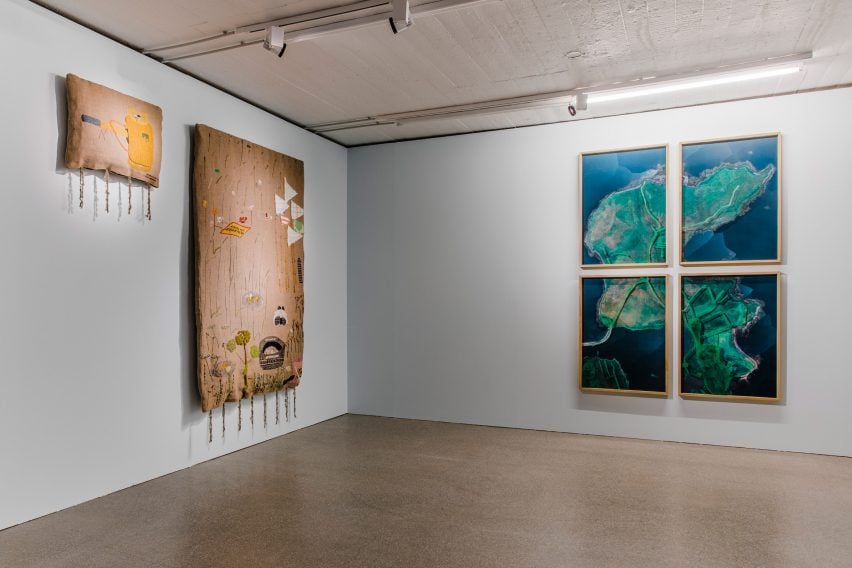
Other contributors to the exhibition include Eygló Harðardóttir, who created a pair of visual diaries depicting her time with the ducks, and artists Brynhildur Pálsdóttir and Ólöf Erla Bjarnadóttir, who made a series of ceramic eggs that are displayed on the floor at various locations throughout the exhibition.
The exhibition also inlcude a film made by Kristbjörg María Guðmundsdóttir, Ragna Margrét Guðmundsdóttir and Vilborg Guðjónsdóttir and an AI-generated film created by Arnhildur Pálmadóttir and Samuel T Rees.
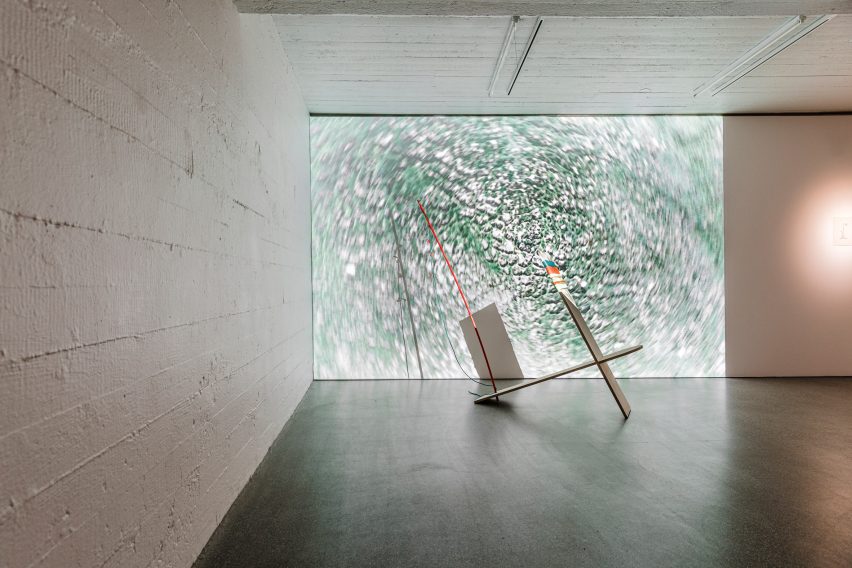
The curators hope that the exhibition will draw attention to the fact that eider farming may be on the decline.
"By documenting and sharing experiences from different eider-farming traditions the aim is to create awareness of this unique Nordic heritage," added Steinpórsdóttir and Thors.
"The average age of the eider farmer is on the rise, so we fear for the future," they continued. "Will this tradition fade out and disappear? Will the ducks lose their protectors and therefore the population of eiders will decrease? Will climate change take its toll? We hope this project opens up this fascinating world of eider to people of all ages."
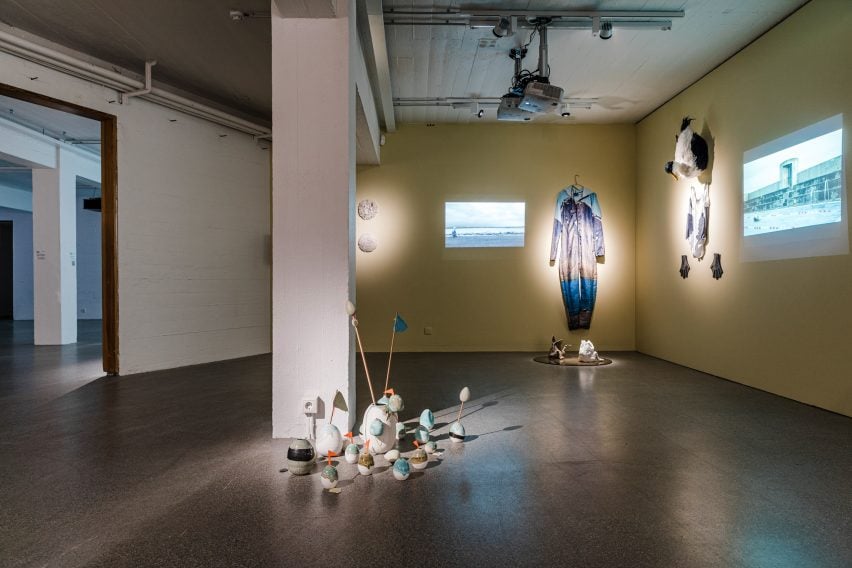
The exhibition, which opened during DesignMarch, runs until the 31 July. An exhibition on Iceland's geothermal pools called Bathing Culture at the Museum of Design and Applied Art also opened during the festival.
The photography is by Sunday & White Studio.
DesignMarch took place from 4-8 May 2022 in Reykjavík, Iceland. See Dezeen Events Guide for an up-to-date list of architecture and design events taking place around the world.